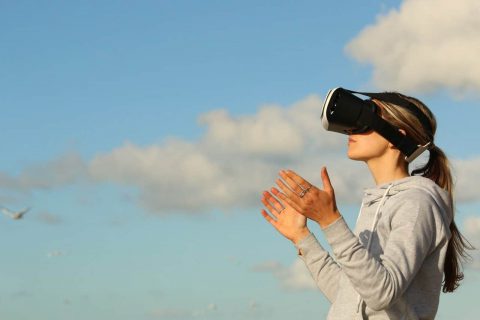Virtual reality is more than just a game
Virtual reality (VR) transports us to totally new, artificial worlds with 360 degree views – all via a headset linked to our smartphone. We’re still only at the tip of the iceberg in terms of ways organisations can use VR, yet several pioneers have found highly innovative ways of incorporating the technology into their business. Virtual Reality is more than just a game. Here’s 6 examples to show you why.
- Communicating a brand’s mission
Through your purchases, TOMS helps provide sight, water and safer birth services to people in need. To communicate their mission statement in a fully interactive way, Toms introduced VR into their Californian store. With the headset on, you’re transported to a remote village in Peru where you experience one of Toms’ ‘giving trips’. Driving into the village, incredibly happy children greet you who are grateful for your gift. An emotional and memorable experience, you immediately want to tell others about it. It enables customers to fully appreciate and understand Toms’ mission.
- Exploring an aspirational lifestyle
Mercedes allows you to Immerse yourself into the lifestyle of owning one of their new range vehicles by watching a 360 degree VR video of a trip to the snowy mountains of Colorado. The 2-minute VR film, featuring their 2017 GLS sport utility vehicle is visually stunning and incredibly fun. The car looks great and casts a positive, contemporary image for the brand. This use of VR is a great example of how using the latest technology can keep an existing campaign fresh and relevant.
- Speeding up the buying cycle
Remember playing the Sims? Well Lowes lets you do just that by being able to create your own bathroom, allowing you to try before you invest! Users can select the plumbing, tiling, lighting, fixture placement and wall colours they would like, and then fit it into the actual room’s dimensions.
- Curing social anxiety
Virtual reality has multiple applications for healthcare. One use is the use of VR in therapy. Psychiatrists at the University of Louisville use VR in cognitive behaviour therapy to treat patients with social anxieties or phobias – including flying, public speaking, or heights. The controlled environment allows doctors to expose their patients to simulations and direct them on how to cope with how they’re feeling.
- Simulating distracted driving
Toyota has used VR within its TeenDrive365 campaign to educate teenagers and parents about distracted driving. The distracted driving simulator includes sensors that translate what the user was doing with the pedals or steering wheel into the simulation, and includes built-in distractions like a ringing phone and friends who are chatting in the backseat.
- Training medics for battle
The government has already started to incorporate Oculus Rift into its training of trauma medics for battle. Before trauma medics are deployed to traumatic environments, the VR headset gives them a sense of realistic battlefield stress. Other military uses are simulations that can help train how to deal with IEDs.
Pima County in Arizona gives officers scenarios, which include a man with a gun, or woman with a knife and a child, to help with training. The scenarios can produce multiple outcomes depending on how the officer reacts.


